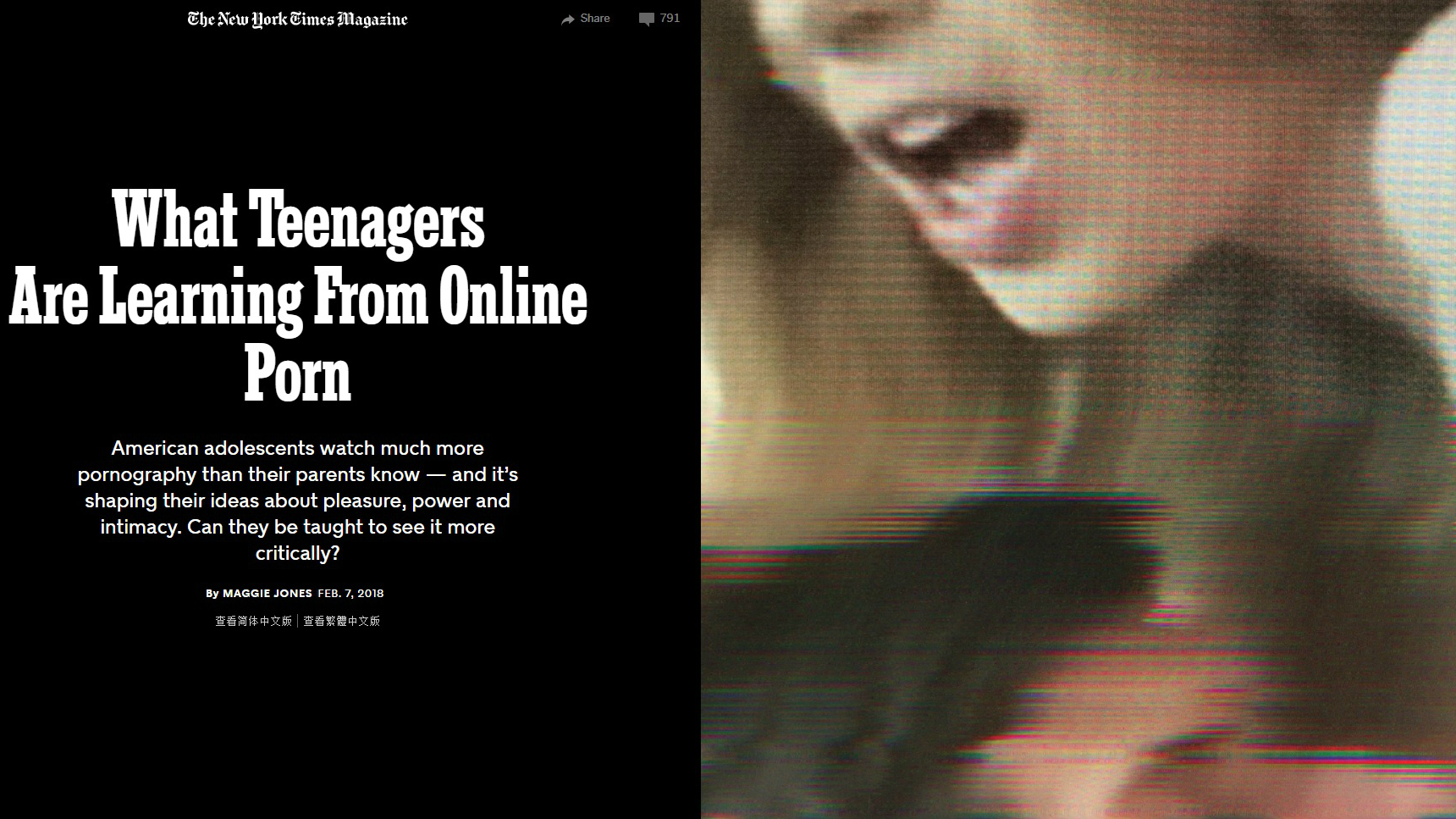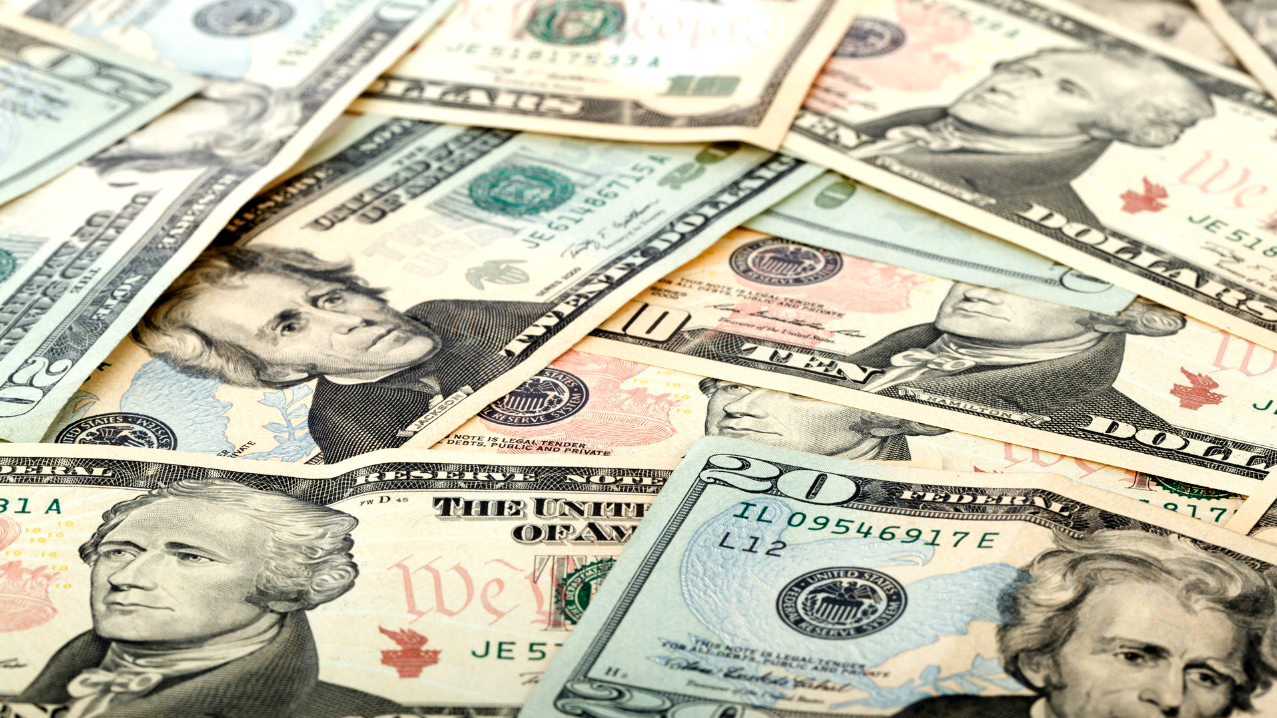Taxpayers are funding porn education for teens, reports a New York Times Magazine story.
On Wednesday, in an article titled “What Teenagers Are Learning From Online Porn,” the outlet wondered “can they be taught to see it more critically?” For insight, contributing writer Maggie Jones turned to a “Porn Literacy” class – funded publicly and taught to Boston high schoolers.
She began by interviewing high school boys who were “pretty perplexed about how porn translated into real life.” That included, “rough images on Snapchat, Facebook” and even Fifty Shades of Grey GIFs shared by girls they knew.
 These boys were a part of Start Strong’s “Porn Literacy” class called “The Truth About Pornography: A Pornography-Literacy Curriculum for High School Students Designed to Reduce Sexual and Dating Violence.”
These boys were a part of Start Strong’s “Porn Literacy” class called “The Truth About Pornography: A Pornography-Literacy Curriculum for High School Students Designed to Reduce Sexual and Dating Violence.”
“Funded by the city’s public-health agency,” Jones said, the class is a part of Start Strong, a “peer-leadership program for teenagers headquartered in Boston’s South End.”
According to the Boston Public Health Commission, Start Strong is an “innovative grass-roots effort focused on 11- to- 18-year-olds to prevent teen dating violence and abuse.” The class, she said, consisted mostly of “black or Latino” students. (And its site doesn’t once mention the word “porn.”)
At least some of the funding appears to come from the DOJ. According to the City of Boston’s Public Health Commission budget, the funding for “Teen Dating Violence” comes from the “Department of Justice, Office of Violence Prevention through Casa Myrna.”
“Boston consolidated grant programs to address children and youth experiencing dating violence and sexual assault,” the budget site reads. Using the same language as Jones and the Start Strong page, the site adds that the “project targets black and Latino youth ages 11-18 in Boston who are affected by teen dating violence and sexual violence.”
Selected from Boston public high schools, roughly two dozen students “attend every year,” Jones added. Among other things, the program teaches about “healthy relationships, dating violence and L.G.B.T. issues, often through group discussions, role-playing and other exercises.”
In other words, Jones described, the class “aims to make them savvier, more critical consumers of porn by examining how gender, sexuality, aggression, consent, race, queer sex, relationships and body images are portrayed (or, in the case of consent, not portrayed) in porn.”
 The class, which began in 2016, was created by Boston University’s School of Public Health associate professor Emily Rothman and Start Strong’s Nicole Daley and Jess Alder. According to Rothman, the curriculum “takes the approach that teaching [adolescents] to analyze its messages is far more effective than simply wishing our children could live in a porn-free world.”
The class, which began in 2016, was created by Boston University’s School of Public Health associate professor Emily Rothman and Start Strong’s Nicole Daley and Jess Alder. According to Rothman, the curriculum “takes the approach that teaching [adolescents] to analyze its messages is far more effective than simply wishing our children could live in a porn-free world.”
Delving into the porn world, Jones commented, “It’s hard to know if, and how, this translates into behavior.”
“[Y]ou don’t have to believe that porn leads to sexual assault or that it’s creating a generation of brutal men to wonder how it helps shape how teenagers talk and think about sex,” she added.
But it seemed to “shape” quite a bit. The teens she spoke with at Start Strong and “around the country" credited both porn and mainstream media for making “anal and rough sex seem almost commonplace.” That media included TV like Family Guy, songs from Nicki Minaj and Rihanna, and movies Fifty Shades of Grey and Mr. & Mrs. Smith.
For the class itself, “warm and easygoing” former Start Strong director Nicole Daley and Start Strong teacher Jess Alder taught the students. Rothman was also present, to tell them things like “there is no scientific evidence that porn is addictive.”
Taught by Daley, the first class included an “exercise in which the group defined porn terms (B.D.S.M., kink, soft-core, hard-core).” The students also voted on things like “whether the legal viewing age of 18 for porn is too high, if working in the porn industry is a good way to make money and if pornography should be illegal.”
Other classes focused on the “types of intimacy not depicted in porn and nonsexist pickup lines,” a “lesson about sexting and sexting laws and the risks of so-called revenge porn,” and the “underbelly of the business.” That included Daley “detailing a midlevel female performer’s salary” like “Blow job: $300, Anal: $1,000. Double penetration: $1,200. Gang bang: $1,300 for three guys. $100 for each additional guy.”
For comprehension, Daley asked the students to “pretend they were contestants on a reality-TV show, for in which they had to decide if they were willing to participate in certain challenges (your parents might be watching) and for how much money.”
Daley also showed negative parts of porn, Jones urged, like studies that “coded incidents of aggression” in porn and statistics like “88 percent of scenes showed verbal or physical aggression.”

The class also played “Porn Jeopardy” where the students “choose from four categories: S.T.D./S.T.I.s, Birth Control, Teen Violence/Sexual Assault and Porn on the Brain.”
In the end, the class didn’t completely change the students’ views, Jones said.
“By the end of the class,” she stressed, “no one said pornography was realistic.” But they still wanted to imitate it.
According to Jones, “surveys from the first three sets of classes” showed that “one-third of the students still said they would agree to do things from porn if their partner asked them to” and that “several also wanted to try things they saw in porn.”
She concluded by pointing to Drew, the teenager she centered her story around. To find out how porn matched with reality, she suggested he find a girl for sex (no, things like friendship and love weren’t mentioned).
“What Drew needed was a girl who was open and honest, as he was, and with whom he could start to figure out how to have good sex,” she said. “It would take some time and most likely involve some fumbling. But Drew was O.K. with that. He was just starting out.”
But Jones’ story had one other glaring flaw: she didn’t speak with those challenging porn, such as the National Center for Sexual Exploitation. Citing multiple studies as evidence, the group condemns porn as a “public health crisis” that presents an “unprecedented epidemic of sexual harm.”





